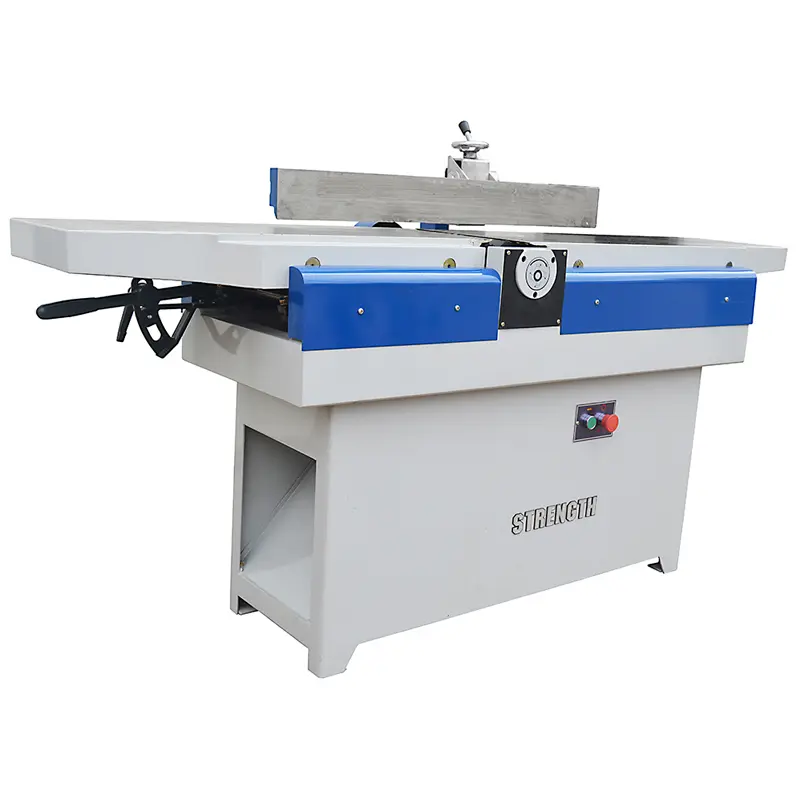Woodworking is a timeless craft that has been practiced for centuries, and one of the key elements in creating beautiful and durable wood products is mastering the art of wood jointing. Whether you are an experienced woodworker or just starting out, understanding and perfecting wood joints is critical to creating high-quality, durable furniture and other wood products. In this article, we’ll explore the art of perfect wood joints and delve into the craft of the wood jointer.
Wood joints are connections between two or more pieces of wood, and they play a vital role in the structural integrity and overall beauty of a woodworking project. There are many types of wood joints, each with its own unique characteristics and applications. From simple butt joints to more complex dovetail joints, the key to mastering wood joints is understanding their strengths, weaknesses, and proper execution.
A wood jointer is an essential tool in woodworking, used to create smooth, flat surfaces and precise edges in wood. It is an important tool for achieving a tight fit and ensuring that the pieces of wood join together seamlessly. Jointers are often used in conjunction with other woodworking tools such as table saws, planers, and routers to create perfect wood joints.
One of the most common wood joints is the butt joint, a simple and straightforward method of joining two pieces of wood together. While it is one of the easiest joints to create, it is also one of the weakest because it relies solely on the strength of the adhesive or fastener to hold the components together. To strengthen butt joints, woodworkers often use reinforcement methods such as dowels or biscuits to increase the joint’s stability and durability.
Another popular type of wooden structural connection is the mortise and tenon connection, which is known for its strength and stability. The joint consists of a protruding tenon on one piece of wood that fits into a corresponding mortise on another piece of wood. The precision and accuracy required to create a tight-fitting mortise and tenon joint make it a hallmark of fine woodworking. Joints play a vital role in ensuring that the wood surface is perfectly flat and smooth, allowing for a seamless fit from mortise to tenon.
Dovetail joints are prized for their intricate, decorative appearance as well as their exceptional strength. These joints are often used on high-quality furniture and cabinets due to their ability to withstand heavy loads and resist tensile forces. The precision and skill required to create a dovetail joint makes it a true test of woodworking expertise. The connectors are integral to achieving the precise angles and smooth surfaces needed to create the perfect dovetail joint.
In addition to these traditional wood joints, woodworkers can explore modern variations and innovative techniques to expand their skills. For example, the use of pocket hole joinery is popular for its simplicity and versatility in creating strong hidden joints. This method involves drilling angled holes into a piece of wood and then using screws to attach it to another piece of wood, creating a strong and unobtrusive connection.
Mastering the craft of a wood joiner is an ongoing learning process that requires patience, precision and a keen eye for detail. Woodworkers must have a deep understanding of wood grain, moisture content, and the characteristics of different wood species to create perfect wood joints. Additionally, honing your skills in operating and maintaining woodworking tools, including jointers, is critical to achieving consistently high-quality results.
Furthermore, the art of perfect wood jointing transcends technical proficiency and encompasses the woodworker’s creative vision and artistic expression. The ability to design and execute complex and innovative wood joints adds a unique touch to woodworking projects, elevating them from functional pieces to works of art. Whether crafting a seamless tabletop or building intricate cabinetry, mastery of wood joints is a sign of craftsmanship and dedication to the craft of woodworking.
In conclusion, the art of perfect wood jointing is the cornerstone of woodworking and requires a combination of technical skill, precision and creativity. From basic butt joints to complex dovetail joints, woodworkers must master the craft of a wood joiner to create durable, visually stunning wood products. By understanding the principles of wood jointing and honing their carpentry skills, craftsmen can improve their craft and produce timeless pieces that showcase the beauty and power of joinery.
Post time: Aug-23-2024

